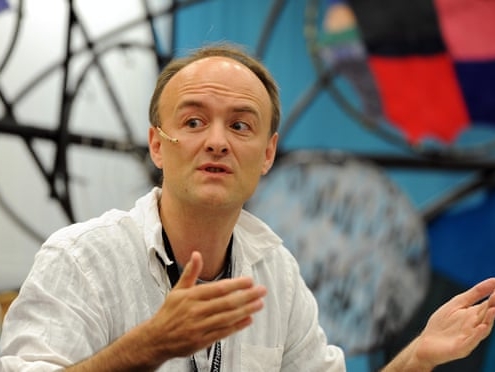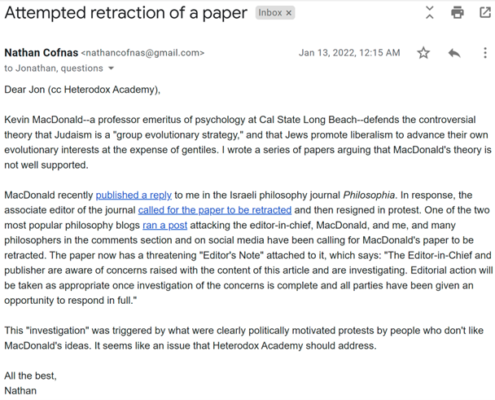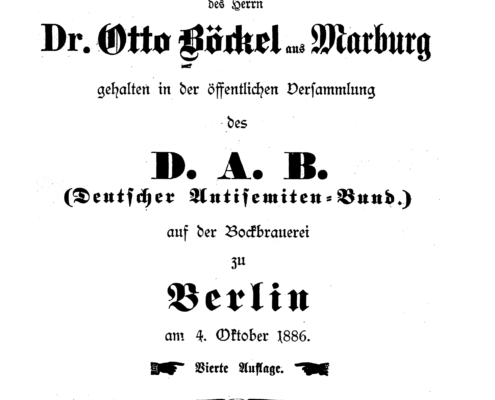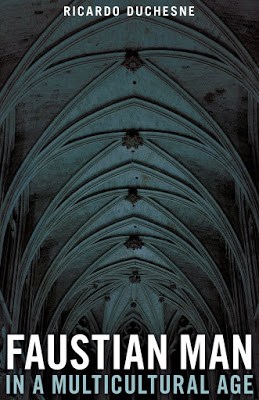Any ideological movement will contain differences of opinion, on everything from practical questions such as issues of leadership and tactics, to deeper questions such as goals, telos, and points of ideology. The so-called “Dissident Right,” to the very limited extent to which it can even be called an ideological movement, is frequently riven by all these disputes and more, making clear the degree to which it is rather a disparate hodgepodge of beliefs and personalities with little in common other than a shared disaffection with some element of the status quo. Indeed, at this point, the very term “Dissident Right” is only useful as a catch-all term to refer to all those critical of some element of the cultural Zeitgeist or political status quo who are not leftists. It does not denote a cohesive, or even coherent, ideological (let alone political) movement. When I use the term in this essay, then, it is precisely in this broadest possible sense, to draw attention to the nature of this mishmash of views and values.
One need only reflect on the developments of the last few years within this mostly online milieu to recall a dozen or more wedge issues that set different elements of this milieu against each other, and even exposed what at times appeared to be basically irreconcilable value systems. The question of the proper response to the perpetual Israel-Palestine conflict, rehabilitating colonialism and imperialism versus appropriating post-colonialism, whether to conceive of political elites as Marxists or Neoliberals, focusing on specific rogue elites versus developing a systemic critique, the war in Ukraine, the extent to which capitalism should be subject to critique, the proper attitude towards the American empire, and especially the degree to which the response to COVID-19 should be regarded as a global conspiracy and the most important problem to address— all of these wedge issues produced a myriad of opinions and ideas, and all led to occasionally vicious back-biting, disputes, and splintering, some of which seems likely to be permanent.
It is true that marginalization, being relegated to an online ghetto-chamber due to censorship, and consequently reduced interaction in the public sphere with actual political opponents has intensified petty squabbling, which has also been exacerbated intentionally by bad actors. Moreover, the primary medium of interaction itself, the internet, inherently produces a certain democratisation of opinion by allowing anyone and everyone to express their views and ideas, and thus inherently results in over-saturation of the conversation with half-baked, poorly thought-out, off-the-cuff, and ill-informed expressions of opinion, thus reducing the quality of public discourse. All this is true, and likely accounts for some of the disputes within the broader “Dissident Right,” and certainly contributes to their frequently vicious nature.
Nonetheless, all of these and other disputes reveal that certain opposing tendencies and ways of thinking were already extant, if perhaps beneath the surface. The question this essay aims to address is the nature and origin of these opposing tendencies.
So far, the best heuristic for explaining and predicting the behaviour and beliefs of opposing tendencies and personalities in response to wedge issues has been the concept of “priors” — that is, “prior convictions,” the beliefs and ideas one had before moving towards the “Dissident Right.” The concept is useful, but flawed. Many people, especially those of more average intellect, or those who were not particularly politically engaged before moving towards the “Dissident Right,” had very vague, transitory “priors,” or even no firm political or ideological beliefs whatsoever. Something deeper is at play, and I propose that it is more a matter of personality types than it is of political persuasion.
The best heuristic for understanding why these fractures cause so much commotion, which positions various factions and figures are likely to take, and even why they, or even you, the reader, might instinctively tend towards one side or the other on any of these issues is the theory of the progressive/conservative archetype dichotomy. According to this theory, people can be grouped, albeit very broadly and imperfectly, into the “progressive” archetype, and the “conservative” archetype.
These groupings are essentially personality types rather than political positions, though they do correlate rather imperfectly with “political directionism” (a subject I will treat further in a later essay): those of the “progressive” type are more likely to be described as “left-leaning,” while those of the “conservative” type are more likely to be described as “right-leaning.” It must be understood, however, that the terms “progressive” and “conservative” do not refer to any specific political orientation, movement, or ideology; rather, they refer to collections of general attitudes and tendencies. Perhaps another thinker might come up with better terms to refer to the same thing, perhaps terms that carry less baggage of their own, but for now they suffice. These archetypes are clusters of values, traits, and ways of thinking that tend to go together. They are the deeper, perhaps subconscious foundation on which ideological and political beliefs are built. To put it in metaphor, these personality traits are the soil from which specific ideas and political positions grow.
The most obvious difference between these two tendencies is in their attitudes towards change, suggested by the very terms “progressive” and “conservative.” The progressive archetype is partially characterized by openness to change. If it had a motto, it might be something like, “Let’s try x.” Those of the conservative archetype, on the other hand, tend to be skeptical of and resistant to change. If it had a motto, it might be something like, “If it ain’t broke, don’t fix it.” In any society, a balance of these tendencies is required. Too much change too quickly will leave a society unable to keep up and adapt, and not all change is for the better. In this regard, the vice of those who conform to the progressive archetype is boredom with the status quo, and unnecessary novelty-seeking — change for the sake of change, and sometimes an urge to adopt positions or aesthetics that they know will be upsetting or alienating to more conservative-minded people. If left unchecked, the progressive attitude could lead to potentially harmful deconstruction of existing social norms and institutions. On the other hand, too little change results in stagnation and inability to adapt to changing circumstances. The vice of those conforming to the conservative archetype is stubbornness, lack of curiosity, and being set in their ways.
Of course, in almost any grouping of people, there will be a spectrum of these attitudes from one pole to the other, with most people falling somewhere between the two extremes. Nonetheless, most individuals will still tend toward one archetype or the other on their attitudes toward change and other metrics.
Another such metric for comparison is their stances on ethics. Those of the conservative archetype tend to favor a prescriptive, rules-based morality, and are more likely to be moralistic and concerned with propriety. They tend to prefer hard-and-fast rules without exceptions, and view direct punishment for breaking rules as the primary way to enforce social mores. Those of the progressive archetype can be equally as ethical in their own behavior, but tend towards a less prescriptive and rules-based morality that is more concerned with fairness. They would be more likely to give second chances to transgressors, and be willing to make exceptions or be flexible with rules if they believe the circumstances call for it. A pattern begins to emerge: at the societal level, and even the group level, a balance between both tendencies is necessary. Taking the conservative ethical tendencies too far can lead to inflexibility, unwillingness to critically examine current social norms, purity-spiralling, and, in personal relationships, can lead to inability to forgive and holding grudges. Leaning too far into the progressive ethical outlook can result in naïveté, being taken advantage of, and at the societal level, lack of clear and consistent structure and authority, as well as an urge to critique and deconstruct healthy social norms.
Attitudes to wealth, success, power, and responsibility differ as well. In this regard, the progressive archetype can be characterized by an instinctive tendency to ascribe material success, or lack thereof, to circumstance, such as luck, or being “born into it.” Confronted with a billionaire, their first instinct will not be that he must be very clever and have a great work ethic, but that perhaps he inherited a fortune, or got lucky, or even that he is probably getting rich off the backs of others. The attitude goes much deeper still. Those of the progressive archetype tend to instinctively empathize and identify with “the underdog,” “the little guy” — for example the poor, the “oppressed,” the workers, the perceived victim. They are likely to emphasize collective responsibility, systemic influences, and material circumstances when examining differences in outcomes between groups or individuals. These tendencies might even occur without regard to personal material circumstances — think of the stereotype of the socialist academic, for example.
On this same issue, the conservative archetype can be characterized by an instinctive tendency to ascribe material success, or lack thereof, to personal agency and morality. Confronted with the same billionaire, their first feeling is a degree of admiration. He must be a shrewd businessman, likely very wise, with an excellent work ethic. Those with this tendency also tend to instinctively empathize and identify with the wealthy, the business owner, the bourgeoisie, or the powerful. They are likely to emphasize individual responsibility and personal agency as the determining factors in disparate outcomes, and sometimes when this tendency goes further, associate moral virtues with material success. The Calvinist doctrine of The Elect is perhaps one of the most extreme manifestations of this tendency. Anarcho-Capitalism and Right-Libertarianism generally are also typical manifestations of it, as is “health and wealth” Protestantism, or at a still more mundane level, the cult of self-improvement centred around self-help books and motivational speakers.
This fundamental attitude to power dynamics has many far-reaching implications and influences. Think, for example, of the main responses to the Israel-Palestine conflict. A progressive tendency to strongly oppose Zionism on the basis of its abuses of power and its cruelty and oppression towards the Palestinian population is shared among elements of the Left, especially Socialist elements, and much of the “Dissident Right.” A conservative tendency to admire the power of Israel and its staunch stance against Muslims leads other elements of the “Dissident Right,” if not to support Israel outright, at least to not take any positions critical of Israeli power and mistreatment of Palestinians, and sometimes to castigate those who do. This can be phrased as not caring about a foreign conflict, as dismissing both parties to the conflict as “enemies of the West” or something similar, and thus insisting that the broader “Dissident Right” should not care about either side; or it may be phrased as direct hostility to Palestinians for their religion. Support for Palestine is also tarnished, in their eyes, by association with the Left. Some will try to link it with the myriad problems caused by mass migration into Europe. In a sense, the issue is complicated by the traditionally anti-Zionist stance of pro-White elements, but even here, the underlying motivations for that stance can differ. Is Zionism to be opposed primarily because the behaviour of Israel is fundamentally unjust, because it abuses its power over civilians, because it wields power out of all proportion to the diaspora Jewish population, (thereby exerting a strong influence on foreign policy of the U.S. and other Western countries), and uses this power unjustly? Or is it to be opposed primarily because it is simply foreign, and a foreign ideology or group, including the Israel lobby, has no business meddling in the affairs of the West?
Other aspects of these archetypes are at play in the values and motivations behind the Israel-Palestine conflict as well, so it will need to be revisited later.
The same underlying attitude towards power dynamics also influences attitudes towards Capitalism and the American empire. Those of a progressive disposition, of course, are generally critical of—or even hostile to—Capitalism. Many, but not all, of them made their way towards the “Dissident Right” from somewhere on the Left that was at least mildly critical of the excesses of Capitalism; some are even former Marxists. They tend to associate their key issues, whether pro-Whiteness, other cultural or moral issues, and questions of social organization, with opposition to Capitalism. Even among those of a conservative disposition, it seems to be widely recognized that at least some of the excesses of unchecked Capitalism must be rethought and controlled, but they are less systematically critical of Capitalism as an ideology, and certainly less hostile to it as an economic model, focusing more often on specific bad actors or policies.
Among the “Dissident Right,” attitudes towards American hegemony are similar: progressive types range from harshly critical of America’s international power, government, and culture, to openly anti-American in a deep ideological and cultural sense. Conservative types inevitably have various problems with the way America is going, but similar to the Capitalism issue, are more likely to single out problematic policies, elites, and organisations, blaming its decline and problems on subversion rather than viewing it as a fundamental systemic problem. Other times, they will frame their criticism of America in moralistic terms, ascribing its downfall to loss of religion, or some other moral failing of the citizens, or bemoaning the weakness of the people who allowed these things to happen.
Even the basis and motivation of pro-Whiteness can be influenced by these tendencies. Many of those of the progressive archetype become pro-White partly in response to what they perceive as injustice towards and oppression of White people, primarily by a more powerful ethnic group that uses other racial and ethnic groups as a weapon against Whites. The motivation is not entirely dissimilar to the grievance morality of the Left. This is not usually the entire basis of someone’s pro-White beliefs, but it often contributes. Whites are framed as “the underdog,” so to speak, and what they perceive as a power imbalance and abuse of power against them can be a strong motivating factor in taking up the pro-White cause. The idea of taking up a new form of post-colonialism, both as a fundamentally moral position and to serve White interests, takes this tendency to its logical conclusion. On the other hand, those of the conservative archetype are likely to be more motivated by pride in the achievements and power of White peoples. Many take pride in the glory of imperialism and colonialism, and sometimes even frame these conquests morally, for example in the idea that conquering the Aztecs was at least partly justified because of their barbaric cultural and religious practices. Consistent with their general attitudes towards power dynamics, they are less likely to be amenable to appropriating post-colonialism from the Left. They are more likely to want to identify with pro-Whiteness on the basis of White people being powerful and dominant. Most individuals fall to neither extreme, and even most pro-White individuals exhibit some combination of these tendencies.
All these and other specific issues frequently feed disputes within the “Dissident Right”, and the opposing perspectives on all of them originate at least partly in the fundamentally differing value sets and attitudes of these personality archetypes. And as with all of these differing tendencies, a balance is needed.
At its absolute worst, the progressive attitude towards material wealth and power dynamics can be manifested as vindictive resentment, not only of the wealthy and powerful, but extending also to quite average middle-class people. One of its quintessential political expressions is in Marxism, which weaponized this tendency in its intellectuals, who in turn weaponized the grievances of the oppressed classes for whom they were advocating. Another extreme expression of this tendency is embodied in those elements of the modern Left engaged in gender theory, critical race theory, “intersectionality,” and other ressentiment-fuelled grievance agendas, and the “antifascist” activists who make up their street presence. At the societal level, as well as within the broader “Dissident Right,” this tendency must be moderated so that it does not descend into “oppression Olympics,” grievance morality, the urge to blame the powerful for all problems without being sufficiently self-critical, or to extending hostility towards the power structure to ordinary people who happen to be better-off.
Racial or moral purity-spiralling is an example of a way the same tendency can get out of hand among those of the conservative archetype. When unchecked, it can also sometimes manifest in alienating expressions of pointless and blanket hatred, in an instinctive aversion to forming systemic critiques of Capitalism and American power, and in an urge to blame the circumstances of struggling White people, or even of the “Dissident Right” itself, on personal moral failings.
The other major distinction between these archetypes is in a matrix of related traits linked with attitudes towards matters of intellect and patterns of analysis. Those of the progressive archetype tend to be more tolerant of ambiguity and nuance, and more skeptical of black-and-White thinking. Indeed, they may prefer complex and nuanced explanations for phenomena — potentially to a fault, where a simple one could suffice. Those of the conservative archetype are often the opposite: skeptical of and impatient with ambiguity and nuance, preferring clear-cut categories, explanations, rules, et cetera. They instinctively prefer simple explanations of phenomena, which in the extreme can manifest in simplistic and one-dimensional thinking.
There are countless ways these instinctive tendencies come into play among the “Dissident Right.” For a familiar example, I will circle back around to the Israel-Palestine issue. While those of a more progressive mindset are of course generally opposed to mass immigration, they are less likely to be categorically anti-Islam, and are more likely to look past the fact that like many of the immigrants entering the West, Palestinians are non-White and Muslim. For them, there is no contradiction between being pro-White and pro-Palestine — in fact, both positions arise from the same fundamental moral instinct. For those of a more conservative mindset, it is often much harder to examine the nuance of the situation and take up a strong and genuine pro-Palestine position. If they have put Muslims generally into the category of undesirable elements in the West, they are less inclined to “make an exception” for Palestinians. They often have little patience for explanations of the plight of Palestinians. The fact that very few immigrants to the West actually come from Palestine is a niggling detail, and having it explained to them perhaps smacks of a know-it-all-ism that reminds them of lefty smugness. Of course, this is not to say that everyone on the “Dissident Right” of the conservative archetype is a Zionist — people change their minds, many have moved on from the “counter-Jihad” conservatism of the mid-late 2010s, and even many of those who are not prepared to actually advocate moral support for Palestine, also do not directly advocate support for Israel.
Closely related to this attitude towards ambiguity and nuance is the attitude toward intellectualism. Broadly speaking, those conforming to the progressive archetype tend to be more intellectually curious and value intellectualism more highly. This is not to say that they are necessarily more intelligent, but simply that they generally have more reverence for intellectuals and intellectual pursuits. A vice that sometimes accompanies this trait is self-conceit, which can come across as smugness and know-it-all-ism. Another pitfall is a temptation to place too much confidence in intellectuals, who do not always deserve it simply for their erudition or eloquence.
Another trait seems to strongly correlate with these attitudes towards intellectualism: preferred mode of analysis — that is, how one tends to analyse the structure and causes of phenomena, especially social and political phenomena. The distinction here is between an inclination towards systemic analysis that emphasizes impersonal, ideological, and structural factors, associated with the progressive archetype, and conspiratorial analysis that emphasizes the personal agency and decisions of individuals and organisations, associated with the conservative archetype.
This is another distinction that has far-reaching effects. It influences how people on the “Dissident Right” conceptualize the system they are dissenting against. Is it the entire system of Neoliberalism and its ideological underpinnings, or is it Marxist subversion of the West? Is Capitalism itself anathema as an economic system and an ideology, or is it just specific individual elites and organisations pulling the strings that must be rooted out? Are the enemies Neoliberals, those who most benefit from and enforce the entire system in place in the West? Or are they Marxist subversives plotting to undermine the West whose influence has gotten out of hand? Of course, for many members of the “Dissident Right”, the answer is a mix of both, to some extent. Nonetheless, most people will instinctively favour one mode of analysis over the other. Even if the issues raised by both types are frequently similar, the framing of these issues is often telling.
Attitudes on COVID as a Paradigmatic Disagreement within the Dissident Right
Nowhere among the “Dissident Right” is this contrast more at play, and nowhere were the ensuing squabbles more vicious, than in the issue of responding to the COVID-19 pandemic and the measures taken against it. Even at the time of composing this essay, in May of 2022, when the majority of restrictions have eased throughout most of the world and COVID-19 has almost disappeared from the news cycle, the fractures are still apparent. It is not merely a matter of agreeing on a narrative of what actually happened. For those who went all-in on countering the mainstream narrative on COVID, who are almost exclusively of the conservative type, restrictions could be brought back on any pretext, and government agencies, health care workers, billionaires, and shadowy elite organisations are constantly plotting some way to spring another wave of lockdowns, travel restrictions, health measures, and vaccinations on the people. Many progressive types, meanwhile, are barely containing their urge to gloat about their predictions of COVID restrictions coming to an end appearing to be true — at least for the time being, for this history has yet to be written.
While almost nobody on the “Dissident Right” touted the mainstream narratives on COVID or supported the system’s response to it, their own narratives varied. Over the first several months, when nobody could quite make sense of what was going on, speculation proliferated, and people’s narratives fluctuated constantly. Theories ranged from “the pandemic is real and potentially quite dangerous, and the system’s response is inadequate,” to “COVID is not real, viruses are not real, all of this was an elaborate plot by evil elites.” Over time, although the fringe theories never quite disappeared, two broad sets of narratives emerged and became dominant.
Among progressive types, the line of thought seemed to be mostly that the virus was real, that it had started out quite deadly but had evolved, as viruses often do, to become less deadly and more transmissible, eventually making it akin to a novel strain of flu. The system’s early response had been hamstrung by incompetence and ideology, so that instead of closing the borders immediately, taking strong measures to prepare the health care system, and enforcing strict quarantines early on, the system had dragged its feet and allowed the disease to rapidly spread around the globe. Later measures imposed such as mandatory masking, lockdowns, and vaccine mandates were criticized as too heavy-handed and unnecessary given the low and declining mortality rate of the disease, but most of these types would stop short of looking for a deliberate conspiracy by some evil agents behind both the virus and all the restrictions. Their criticisms were generally milder, and focused more on the general systemic response, and many were wary of making anti-COVID and categorically anti-vax positions a main focus of the “Dissident Right.” They were instinctively put off by the conservative tendency to point the finger at a handful of specific individuals like Anthony Fauci, Bill Gates, Klaus Schwab, and organisations like the World Health Organisation and the World Economic Forum as the masterminds behind a global conspiracy to release the virus (or at least convince everyone a virus had been released) and then usher in the draconian restrictions in response to it.
Such talk put them in mind of QAnon narratives, and they were sometimes overly dismissive of all those who viewed COVID as of primary importance, even lumping them in with others they dismissed as “kooks” — flat earthers, blanket anti-vaxxers, and of course, QAnon believers. While it is true that these beliefs exist on a sort of spectrum, and the circles of those engaged primarily in anti-COVID dissent did often overlap with these and other fringe conspiracy theorists, there was often an element of smugness and conceit to this dismissive attitude. The conceit of more outspoken progressive types in this regard was in associating these more conspiratorial beliefs, whether subconsciously or not, with lower intelligence and lower status, thus implying that their own beliefs correlated with higher intelligence. I am not aware of any figures who said this outright in so many words, but the distilled essence of these sentiments was impossible to miss.
Furthermore, the tendency of those on the “Dissident Right” conforming more to the conservative archetype to view any and all restrictions on personal freedom as inexcusable often rubbed progressive types the wrong way, and made them concerned that many in the milieu were “reverting to libertarian and normie conservative priors.”
From the perspective of those of a more conservative disposition, the outbreak of the virus and the response to it represented a sudden, dramatic, and unexpected change that impacted them directly, as it did everyone. It imposed annoying constraints on their personal freedom that they did not agree were necessary, for a turn of events that they had not yet wrapped their minds around, and did not even necessarily believe in. These inconveniences and sacrifices were supposed to be borne for “the greater good,” a concept that they tended to be skeptical of to begin with, and which, coming from the mouths of so-called “experts” (i.e., intellectuals) whom they did not know personally and in whom they had little faith, was bound to raise their hackles. Lockdowns and vaccine mandates were a clear line in the sand. If governments, “health experts,” and other sorts of elites trying to coerce people into taking an injection with potentially life-altering consequences against their will was not the hill to die on, then what was? Someone had to answer for all this. Tepid systemic critiques about a bungled early response or Capitalism’s need to keep borders open would not cut it. Something more sinister had to be going on, and someone had to be behind it. The hesitancy of most progressive types to go all-in on countering the COVID agenda, whatever it was, seemed short-sighted, or even nefarious. What did the other issues that they wanted to focus on matter if the vaccine killed or sterilized everyone who took it? The tut-tutting from progressive types about conspiracy theories, kooks, and backsliding into libertarianism was reminiscent of the attempts at shaming and stigmatisation from mainstream sources against those going against the narrative. Some even went so far as to lump outspoken progressive types expressing skepticism of a grand overarching conspiracy with those who were “shilling for the vaccines” or “telling people to trust the science.”
Conclusion
At the time of this writing, a specific, satisfying, cohesive, coherent, and complete narrative on COVID has yet to emerge from anywhere on the “Dissident Right,” and only time will bring us closer to one. With various factions so invested in their own theories, though, a unified narrative is unlikely to ever emerge. The point here is not to determine the truth value of the specific claims of any particular narrative, but to illuminate the underlying tendencies and patterns of thought that made different types of people more likely to gravitate to differing narratives.
And this holds true for all of these wedge issues, which were only selected as examples to illustrate some of the ways this archetype dichotomy influences the discourse and divisions of the “Dissident Right.” The intention is not to take sides, to elevate one type above the other, nor to exacerbate these divisions — quite the opposite, in fact. The intention is to provide a useful heuristic for understanding the motivations, assumptions, and values of people who at times hold seemingly irreconcilable opinions, in order to facilitate better understanding, communication, and cooperation. My hope is that this essay will open up a new field of inquiry for other thinkers to expand on, and perhaps even critique and fine-tune.
Of course, this heuristic has its limits. It does have broad implications for how we can understand differing perspectives, but not every division can be boiled down to this difference of archetypes. The Pagan/Christian divide, for instance, does not seem to correlate at all with the archetype dichotomy, with both personality types on both sides. Clumsy attempts by both progressive and conservative types to shoehorn the ongoing Russia-Ukraine conflict into some sort of “left vs right” paradigm fall flat. On this particular issue, the factions do not break down cleanly along progressive/conservative lines, with everyone from CNN-watching liberals to AZOV-supporting right-wing nationalists supporting Ukraine, and everyone from communists to White nationalists, and even MAGA-sphere conservatives supporting Russia because they see Russia as the last bastion against the total neoliberal globalist hegemony, which they detest. And these are only two examples of wedge issues that do not correlate closely with the archetype dichotomy. Analysts must thus avoid the temptation to over-attribute different opinions to this heuristic when other factors are at play.
An understanding of these contrasting personality types could potentially also be exploited by bad actors to sow division and exacerbate infighting. Indeed, various divisions are already exploited by hostile actors, albeit without a systematic understanding as to why they arise; with that systematic understanding, the potential for more thoroughly playing up these divisions and even manufacturing new ones could be significantly worse. Additionally, most people are at neither extreme, and many have some traits associated with each archetype. Furthermore, just because someone naturally conforms to one archetype or the other in their instincts and inclinations, this does not mean that he is incapable of changing his mind. Personality type certainly influences which leading figures one chooses to follow and the comrades with whom one chooses to spend time, but it is far from the only factor. And these thought leaders and comrades have their influence on their followers and each other in turn, so that people’s specific opinions will be influenced by who they follow, who they spend time around, general trends, and, for those who are sufficiently intelligent and open-minded, they can even be influenced by new information and convincing arguments. All this is to say that people change their minds all the time, and someone who fits one particular archetype does not necessarily fall squarely on that side of every issue and division. For quite some time while I was developing this theory, these caveats and concerns made me leery of directly articulating and disseminating it lest it be misunderstood and/or used with ill intent, but I believe the insight and implications it holds are too important to keep it under wraps.
While I have not gathered any formal data on the numbers, the impression I get from subjective observation and participation is that the “Dissident Right” seems to be composed of both archetypes in almost exactly equal numbers. It is also riven by factional splits centred around a multitude of organizations, parties, websites, activist groups, and key figures. The archetype dichotomy certainly plays a role in this factionalism, but it is far from forming a complete picture. Many factions are composed of both types, and their differences instead are centred around religion, aesthetics, region, tactics, or leaders.
A comrade challenged me that since older members are more often conservative types, age must play a role here. In a sense I believe he was correct, but not necessarily because people simply move towards the conservative archetype as they get older. I won’t rule out that there could be something to that, but it is not the whole story. The other factor at play in the age distribution is the fact that traditionally, the vast majority of people who moved towards some sort of “Dissident Right” or pro-White politics came from somewhere on the Right, and as such were more likely to be of the conservative type. The years of 2015-2020 saw a massive influx of young people into the “Dissident Right,” that included the usual people coming from the Right, but now also many coming from somewhere vaguely on the Left. Those coming in from the Left, of course, are more likely to be of the progressive type.
The years of 2015–2020, and especially the early days of 2015–2017, were a sort of anomaly during which various factions and tendencies were temporarily brought together into a milieu — it never did quite amount to a movement — based on shared opposition to the dominant cultural and political trends of the day. There were various terms for this broad tendency, and of course many more for the different factions within it, but “Dissident Right” is the one that seems to have stuck. Since then, however, under the pressure of censorship as well as fundamental pre-existing differences, the disagreements have deepened, factionalism has intensified, and the factions that have the least in common seem to be drifting further apart from each other. If they are able to do so without focusing on taking swipes at other factions, and instead put their focus on their own projects and goals, then this development is probably for the best. Commonly held disaffection is not enough to create a movement, especially if even the nature of the problems, let alone the solutions to said problems, cannot be agreed upon. Rather than attempting to create and then police a “big tent,” it has the potential to be more productive for the various schools of thought, organisations, parties, and tendencies to go their own way and pursue their own projects, collaborating and cooperating when it is advantageous for a particular goal.
And yet, as much as it can be a potential fracturing point, part of the strength of dissident thought and politics is its unique ability to attract and make use of people of both archetypes. The as-yet unnamed, future, post-liberal way of thinking, being, and organising society that is only just beginning to crystallize among certain elements from the remains of the “Dissident Right” must keep this in mind moving forward, and its thought leaders must keep their minds open to challenging ideas, resist the temptation to favour their own biases too strongly, and make every attempt to understand and facilitate cooperation between people of both the progressive and conservative archetypes. Whatever future movement that manages to eventually emerge will be stronger for it.
A chart to help conceptualize the distinguishing characteristics of each archetype:
| The “Progressive” Archetype |
The “Conservative” Archetype |
| Idealistic |
Pragmatic |
| Moral instead of moralising; less prescriptive and rules-based, more concerned with fairness |
Moralising; tend to favour prescriptive, rules-based morality |
| Tolerance for ambiguity and nuance, more willing to bend, break, or change rules, skeptical of black-and-White, absolute categories — can lead to overlooking simple explanations in search of nuance |
Black-and-White thinking, prefer clear-cut and unambiguous categories, descriptions, rules, impatient with nuance and ambiguity — can lead to being simplistic and inflexible |
| Emphasize collective responsibility, structural factors |
Emphasize personal agency |
| Value interdependence |
Value self-reliance |
| Open to change — can lead to novelty-seeking when taken too far |
Skeptical of and resistant to change — can lead to being stubborn and set in their ways |
| “Let’s try…” |
“If it ain’t broke, don’t fix it.” |
| Tend to give second chances and make exceptions — can lead to naïveté and being taken advantage of |
Prefer hard and fast rules with no exceptions — can lead to missed opportunities, and inability to forgive in personal relationships |
| Concerned about regretting a missed opportunity |
Concerned about regretting a bad decision |
| Sympathize and identify with the “underdog”, the “little guy”, e.g. the poor, the workers, the oppressed, the victim |
Sympathize and identify with the wealthy, the business owners, the authorities |
| Ascribe material success, or lack thereof, to circumstance, luck, being “born into it” |
Ascribe material success, or lack thereof, to personal agency, moral character, what one deserves |
| Intellectually curious — can lead to self-conceit and/or too much trust in intellectuals |
Impatient with intellectualism — can lead to anti-intellectualism and small-mindedness |
| Desire to expand during good times |
Desire to save for hard times |
| Value eloquence, wit, new ideas, “what you know” |
Value work ethic, proven capabilities, material success, “what you can do” |
| Prefer complex and nuanced explanations — sometimes to a fault, where a simple one could suffice — can lead to over-complicating issues |
Prefer simple explanations — can become overly simplistic and one-dimensional |
| Value prestige |
Value material wealth |
| Reforming social norms, traditions, and institutions |
Preserving social norms, traditions, and institutions |
| Innovation, exploration, reform |
Questioning unnecessary change, slowing down change to give time to adapt |
| Pushing for fairness, advocating for less fortunate, giving second chances, grappling with moral questions, establishing good relations with out-groups |
Enforcing rules, order, morals, and social norms, setting boundaries between in-group/out-group |
| Example social roles: intellectuals, artists, care-givers, reformers, diplomats |
Example social roles: producers, builders, enforcers (e.g. police), wealth creators |
 Confronted by a confederacy of dunces: Dominic Cummings and his crammed cranium
Confronted by a confederacy of dunces: Dominic Cummings and his crammed cranium Grovelling goys in British politics: (clockwise from top) Sajid Javid, Boris Johnson, Priti Patel at Conservative Friends of Israel
Grovelling goys in British politics: (clockwise from top) Sajid Javid, Boris Johnson, Priti Patel at Conservative Friends of Israel








